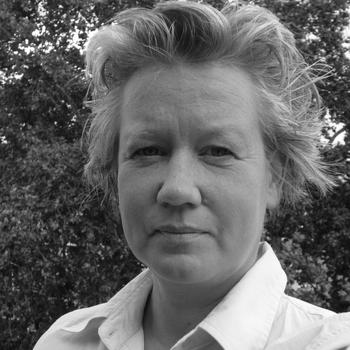Friederike Felbeck

Interweaving Performance Cultures
Fellow 2010/11
Director, writer and producer. After her studies with Jürgen Flimm, she worked as personal assistant to Armand Gatti und Roberto Ciulli. Her debut after Pasolini´s Pig´s Stall was followed by productions of both classical and contemporary authors. She has written plays about fine artists Eva Hesse and Alexej von Jawlensky and developed performances concerned with urban development and architecture. Her travels have frequently led her to the Middle East, initiating the first Syrian-German co-production after Sadallah Wannus Tuqûs al-ishârât wa al-tahawwulât.
Her most recent productions include Everyman by Hofmannsthal, staged with actors from Germany and Senegal and Antigone, performed on the premises of a former National Socialist military training institution that was transformed to a memorial site after WWII. “Government Poetry”, an artistic view on the UNESCO Convention on the Protection and Promotion of the Diversity of Cultural Expressions, is still on-going.
As a lecturer, she has focused on psychoanalysis and film and the role of art in human rights education.
Since 2011, Friederike has been a member of the International Theatre Institute (ITI) Germany.
Research Project
If, As, So – The Many Metamorphoses of Constantin Stanislavski
Stanislavski’s methodological writings, rehearsal diaries, autobiography, and letters have passed through many hands and travelled to many countries. For my own work as a theatre director, Stanislavski’s call for authenticity, for physical actions, and for a thorough analysis of the instruments of performing has provided quite modern material and a useful quarry. Working in foreign countries, I have encountered very different, contrasting interpretations. The adoption and translation into practice of Stanislavski’s works obviously depend on their specific implementation in drama schools or in theatre studies. However, sociological and psychological backgrounds, language, cultural influences, traditions of performativity, issues of censorship, etc. seem to have an even greater impact. It is highly interesting to observe which elements of his writings are drawn or come into play in a specific cultural context, how they amalgamate with indigenous theatre forms and transform into something new and unknown. While Stanislavski’s writings have always been the object of divergent and controversial interpretations, appropriations, and encroachments, engagement with his pedagogy seems to have abated more recently. Indeed, one could almost say that a lull seems to have settled over fresh experimental approaches and necessary clarifications for a contemporary theatre.
Additionally, current training and theatre practice are shaped by a third or even fourth generation of interpreters. Take, for instance, the long voyage of Stanislavski’s work from pre-war Germany via the US back to the Germany of the 1950s, presenting itself as Method Acting, and its most recent incarnation in workshops conducted by Strasberg’s many disciples after 1978. By contrast, in a country like Syria, graduates from East German universities or Moscow have carried his work into the Damascene Conservatory since its founding in the early 1970s, putting their stamp on a comparably young theatre tradition.
Recommended Publications
- Various publications in journals and magazines, e.g. Theater der Zeit (Berlin), Didaskalia (Wroclaw), AGORA - Düsseldorfer Beiträge zu Psychoanalyse und Gesellschaft.


